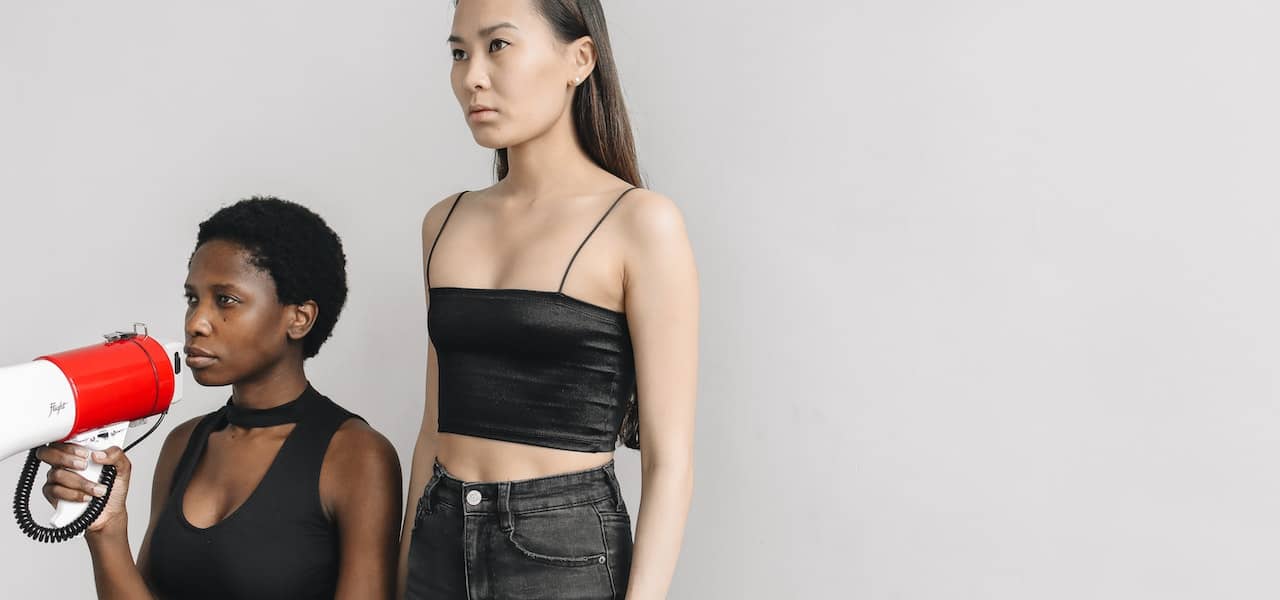Here is your ultimate guide to thinning hair vs fine hair.
Introduction to Thinning Hair vs Fine Hair
When it comes to hair, many people often use the terms “thin” and “fine” interchangeably, but they actually refer to different characteristics of hair. Understanding the differences between thinning hair and fine hair can help you better manage and care for your locks. In this article, we’ll explore what defines thinning hair and fine hair, what causes hair thinning and hair loss, and how to make thin hair look thicker. What you need to know about thinning hair vs fine hair? Why thinning hair vs fine hair is important? Here is your complete guide to thinning hair vs fine hair. So let’s explain the difference between thinning hair vs fine hair.
What’s the difference between fine and thin hair?
Fine hair refers to the diameter or thickness of each individual hair strand. Fine hair has a smaller circumference and a lighter weight compared to thicker hair strands. People with fine hair often have a lot of hair strands, which can give the appearance of thicker hair, but it may lack volume and body.
On the other hand, thinning hair refers to a reduction in the number of hair strands on the scalp. Thinning hair can occur due to a variety of reasons, including genetics, age, hormonal changes, stress, and medical conditions. Thinning hair can lead to hair loss or bald spots and is a more severe condition than fine hair.
Do I have fine or thin hair?
To determine if you have fine or thin hair, you can perform a simple test. Take a single strand of hair and hold it between your fingers. If you can barely feel the strand between your fingers, then you have fine hair.
If you can feel the strand easily, then you have thick hair. If you can see your scalp through your hair, then you may have thinning hair.
Here’s a table comparing the characteristics of thinning hair and fine hair:
| Thinning Hair | Fine Hair | |
|---|---|---|
| Definition | Hair that is losing density and volume due to a decrease in the number of hair follicles or changes in hair growth cycle | Hair that has a small diameter, but a normal density and volume |
| Texture | Thinner, weaker, and easier to break | Soft and silky |
| Appearance | Sparse, lack of volume, and easily flattened | Fuller and easier to style |
| Causes | Genetics, aging, hormonal changes, stress, medications, and certain medical conditions | Genetics and ethnicity |
| Treatments | Topical treatments, medications, and hair transplants | Volumizing products and haircuts |
| Styling Tips | Use a volumizing shampoo and conditioner, avoid heavy products, and try hairstyles that add volume, such as layered cuts or textured styles | Use lightweight products, such as mousses and sprays, and avoid heat styling tools that can damage hair |
Note that these characteristics are generalizations, and individuals may experience variations in their hair type and characteristics.
What causes hair thinning and hair loss?
Hair thinning and hair loss can occur due to a variety of factors, including genetics, age, hormonal changes, stress, and medical conditions. Here are some of the most common causes of hair thinning and hair loss:
- Genetics: The most common cause of hair thinning and hair loss is genetics. If hair loss runs in your family, you’re more likely to experience it too.
- Age: As we age, our hair naturally thins and loses volume.
- Hormonal changes: Hormonal changes, such as those that occur during pregnancy, menopause, or thyroid imbalances, can cause hair loss.
- Stress: High levels of stress can cause hair loss or thinning.
- Medical conditions: Certain medical conditions, such as alopecia areata or trichotillomania, can cause hair loss or thinning.
How can I make my thin hair look thicker?
While there’s no cure for thinning hair, there are several ways to make your hair look thicker and fuller. Here are some tips for managing thin hair:
- Get a haircut: A shorter haircut can make thin hair look fuller and thicker.
- Use volumizing products: Volumizing shampoos and conditioners can help create the appearance of thicker hair.
- Avoid heavy products: Heavy styling products can weigh down thin hair, making it look flat and lifeless.
- Blow-dry your hair upside down: Blow-drying your hair upside down can help add volume and lift to your roots.
- Use a thickening spray: Thickening sprays can help create the appearance of thicker hair.
Hair care for thin, fine hair
If you have thin, fine hair, it’s important to take extra care when washing and styling your hair. Here are some tips for caring for thin, fine hair:
- Use a gentle shampoo: Look for a shampoo that’s specifically designed for thin, fine hair.
- Avoid over-washing: Washing your hair too often can strip your hair of its natural oils, leaving it dry and brittle.
- Use a wide-toothed comb
Hair care for thin, fine hair
When it comes to hair care for thin, fine hair, the goal is to make your hair look fuller and thicker. Here are some tips to help you achieve that:
- Use volumizing products: Look for shampoos, conditioners, and styling products specifically formulated to add volume to hair. These products typically contain ingredients that coat the hair shaft and add thickness, such as polymers, proteins, and keratin.
- Avoid heavy products: Heavy products like waxes, pomades, and oils can weigh down thin hair, making it look even flatter. Instead, opt for lightweight products that won’t weigh your hair down, like mousse or a light hairspray.
- Don’t overwash your hair: Washing your hair too frequently can strip your scalp of natural oils, leading to dryness and breakage. For thin, fine hair, it’s best to wash every other day or every two days to prevent damage and breakage.
- Use a wide-tooth comb: When brushing or combing your hair, use a wide-tooth comb to prevent breakage and damage. Start at the ends of your hair and work your way up to the roots, being gentle and careful not to pull or tug too hard.
Hairstyles for thin hair to add volume
If you have thin, fine hair, there are certain hairstyles that can help add volume and make your hair look fuller. Here are a few to consider:
- Short, layered bob: A short, layered bob can help add volume to thin hair. Ask your stylist for choppy layers that will give your hair a textured look.
- Pixie cut: A pixie cut is a short, cropped hairstyle that can add volume and texture to thin hair. Consider adding layers to your pixie cut to give your hair more movement and body.
- Long layers: If you prefer longer hair, consider adding long layers to your hair. This will help add volume and movement to your hair, making it look fuller.
- Beachy waves: Beachy waves are a great way to add volume and texture to thin hair. Use a curling iron or wand to create loose waves, then tousle your hair with your fingers to add texture and movement.
How to prevent thin hair
While there’s no guaranteed way to prevent thinning hair, there are certain steps you can take to keep your hair healthy and strong. Here are some tips to consider:
- Eat a balanced diet: A healthy diet that’s rich in protein, vitamins, and minerals can help keep your hair strong and healthy. Be sure to include plenty of lean protein, leafy greens, and whole grains in your diet.
- Manage stress: Stress can cause hair loss, so it’s important to manage stress levels. Consider practicing yoga, meditation, or other stress-relieving activities to help reduce stress.
- Don’t smoke: Smoking can damage hair follicles, leading to thinning hair and hair loss. Quitting smoking can help improve hair health.
- Be gentle with your hair: Avoid pulling or tugging on your hair, and be gentle when brushing or combing. Use a wide-tooth comb and start at the ends of your hair, working your way up to the roots.
- See a doctor: If you’re experiencing sudden hair loss or thinning, it’s important to see a doctor. There may be an underlying medical condition causing your hair loss that needs to be addressed.
FAQ
Is my hair thinning or just fine?
It can be difficult to determine if your hair is thinning or just naturally fine, but there are some factors to consider. Fine hair typically has a smaller diameter and feels soft and silky, while thinning hair may feel less dense and have less volume. You may notice more hair falling out than usual or a widening part on your scalp if your hair is thinning. It’s important to pay attention to changes in your hair and seek advice from a dermatologist if you’re concerned.
Read More About How To Get Rid Of Cramps?
Is thinning hair the same as hair loss?
Thinning hair and hair loss are not exactly the same, but they are related. Thinning hair refers to a reduction in hair density, while hair loss is the complete or partial loss of hair from the scalp.

Thinning hair can lead to hair loss if left untreated, and hair loss can be a result of various conditions, including genetics, hormonal changes, and medical treatments. If you’re experiencing thinning hair or hair loss, it’s important to consult with a dermatologist to determine the underlying cause and develop a treatment plan.
Read More About The Surprising Health Benefits of Mangoes.
Conclusion
In conclusion, understanding the difference between fine and thin hair is important when it comes to identifying the root cause of hair concerns and taking the right steps to address them. While some factors, such as genetics, cannot be changed, there are several lifestyle changes, hair care practices, and styling tips that can help make thin and fine hair appear fuller and healthier.
Read More About Best Tricep Dumbbell Exercises for Strong and Toned Arms.
It’s important to remember that everyone’s hair is unique, and what works for one person may not work for another. Experimenting with different products and techniques may be necessary to find what works best for your hair.
Read More About Cucumber Calories.
At the end of the day, embracing your hair’s natural texture and working with what you have can lead to greater confidence and a healthier relationship with your hair. Whether you have fine or thin hair, there are plenty of ways to keep it looking its best.
Read More About How Much Caffeine is in Green Tea and Why It Matters?

